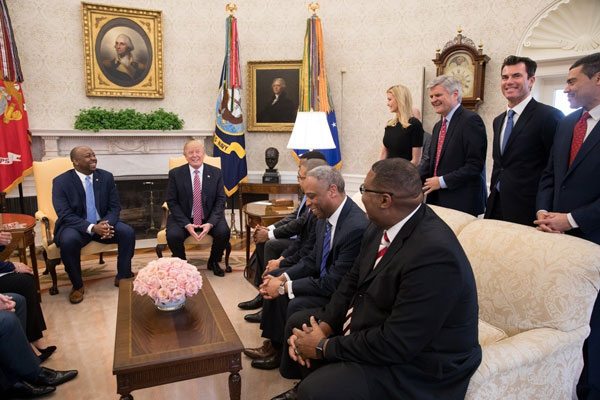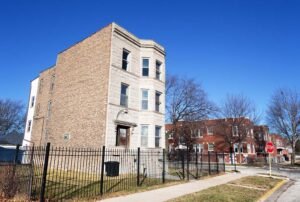
February 13, 2018; Next City
The recently enacted $1.5 trillion tax bill included within it a provision, authored by Senators Cory Booker (D-NJ) and Tim Scott (R-SC), designed to encourage investment in low-income communities.
The relevant bill section, titled the “Investing in Opportunity Act,” permits governors to designate low-income census tracts in their states as “Opportunity Zones.” To qualify as “low-income,” the census tract must have as a poverty rate of at least 20 percent and median family income no greater than 80 percent of the median for the overall region. Designations must be made no later than April 22nd and will last for ten years. States that fail to designate zones by the due date will be ineligible for the program.
These provisions, as described by Black Enterprise, permit “would-be investors to defer capital gains recognition and the associated tax if they invest the gains in new Opportunity Zones located in ‘low-income community’ census tracts.”
In other words, if you bought stock in a company and that stock gained value, you can sell the stock for a profit and defer capital gains tax if you invest the gains in an Opportunity Zone. This approach provides an incentive for investing in communities that have, historically, not received investment.
A region, once tagged as an Opportunity Zone, will retain that status for a decade. Of course, such a designation may open other doors for assistance, be it at the local, state, or federal level, depending on what legislators and regulators do.
There is also a restriction in the legislation that says that no more than 25 percent of eligible census tracts may be selected as Opportunity Zones, a provision that is likely meant to concentrate limited investment dollars for greater impact. As a result, each state must decide which low-income tracts it wishes to select as priority zones. In Missouri, for example, the state has issued a request-for-proposals. Proposals are due to the governor by March 21st, leaving the governor’s office a month to select from among the proposals submitted.
Sign up for our free newsletters
Subscribe to NPQ's newsletters to have our top stories delivered directly to your inbox.
By signing up, you agree to our privacy policy and terms of use, and to receive messages from NPQ and our partners.
Investment in Opportunity Zones is expected to occur through federally chartered Opportunity Funds. Individuals and corporations that sell stock and purchase investments in these funds will have their capital gains taxes deferred until they exit the funds. These funds will be “certified by the US Treasury and…required to invest at least 90 percent of their investment dollars into businesses or properties located in designated Opportunity Zones.”
The Economic Innovation Group has estimated that there are $2.3 trillion in unrealized capital gains, meaning that individuals and corporations are holding onto securities that they would prefer to sell, in order to avoid paying capital gains tax. The idea behind the Opportunity Funds concept is that the funds could tap into this investment capital, since capital gains tax would be deferred until the money exits the fund—presumably this could create a pool of investment capital for the designated Opportunity Zone areas. The cost of this tax expenditure program is estimated to be $1.6 billion.
This approach echoes Clinton-era Empowerment Zones. Clinton’s approach had the federal government choosing the locations, rather than the states, and brought to bear an array of government programs, including tax credits for businesses which added jobs in the zone, rather than trusting the market impact of increased investment. The new program differs from the Empowerment Zone program in two key aspects: 1) It won’t be limited to a few cities and could benefit rural areas, as well as urban areas; 2) the tax benefits flow to investors (i.e., through deferred capital gains) rather than involving direct tax credits to businesses that locate in the designated communities.
The Empowerment Zone programs—in multiple variants and under both Republican and Democratic administrations (each administration called it something different)—were generally seen to have meager results. While it is hardly clear that the wealthy need another way to defer capital gains tax, the opportunity zone program, by creating a common pool of money that invests in businesses in the qualified area, does help prevent the situation of having a business move into a community, collect the tax benefit, and leave, which was a common problem of the Empowerment Zone program.
One major flaw in the bill, however, is the need to create Opportunity Funds and not use existing community development financial investment (CDFI) infrastructure that has been developed over the course of two decades and now constitutes a nationwide community investment system with over $120 billion in assets. According to Next City:
It is not yet clear whether any existing organizations will automatically qualify as Opportunity Funds. For example, the US Treasury has already certified more than a thousand community development financial institutions, although that certification only requires 60 percent of an institution’s investments be made into low- or moderate- income census tracts. The US Treasury also certifies community development entities, which provide access to the new markets tax credit program.
Similarly, “Some advocates see it as a lost opportunity that the Investing in Opportunity Act did not automatically designate minority-depository institutions, which already have a track record of serving many low-income communities, as eligible to receive investment from the program.” If only newly formed organizations will qualify to serve as managers of Opportunity Funds, there is a danger of the loss of local knowledge and experience that could slow the program down and weaken its effectiveness.—Martin Levine and Steve Dubb













